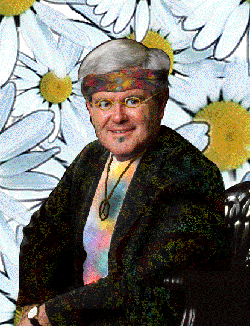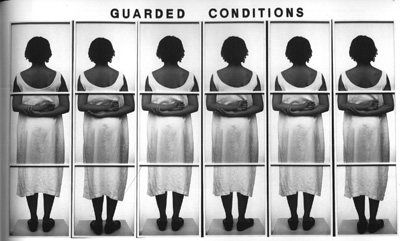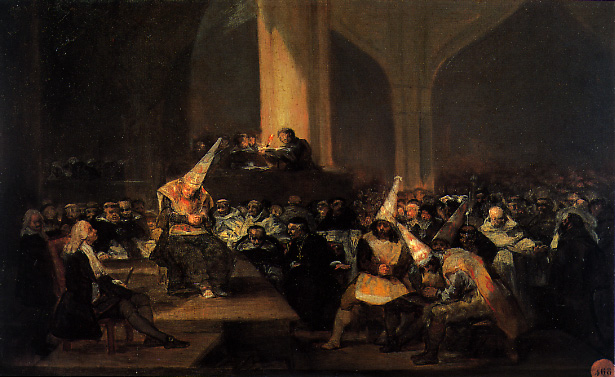[Postscript: For reasons unknown to Portland NORML, the Oregon legislature changed the rules within weeks of Smith's costly courtroom victory. Henceforth, according to Smith's attorney, Leland Berger, testing positive for cannabis or any other illegal drug ipso facto constitutes grounds for marijuana defendants to be jailed prior to their trial in Oregon.].
Thanks for your support,
Gretchen Harris [End quote]
Paul Stone
American Anti-Prohibition League, Portland, Oregon
The Star-Ledger (Newark, NJ), March 29, 1997, Opinion section
Agence France Presse, March 22, 1997
Examiner contributor Steve Heilig, a Join Together National Fellow focusing on drug policy, is director of public health and education for the San Francisco Medical Society.
By Frank Rich
FOR IMMEDIATE RELEASE
DATE: March 27, 1997
Cannabis Freedom Fund cites violation of constitutional right to privacy in arrest of sickle cell patient by LAPD.
Contact:
Sister Somayah Kambui, Director
Richard M. Davis, President
take care -- peace -- ashley in atlanta
Threat #5: The Federal Backlash Against The Movement For Saner Drug Policies
1. Medical Use of Marijuana
2. Clean Needles
3. Mandatory Sentences for First-Time Drug Offenders
The Recorder, American Lawyer Media, L.P., March 25, 1997, p. 1
Approved Illnesses
The Los Angeles Times, April 3, 1997
"Placer County Man Faces 25 Years to Life for 2 Ounces of Pot in '3 Strikes' Case"
Dale Gieringer
Thanks!
Sincerely,
Thomas A. Rohan
The Dallas Morning News, March 30, 1997, p. 17A
For Immediate Release
DATE: March 27, 1997
Alaska Supreme Court Decision On Constitutional Right To Privacy
Richard M. Davis
Don Wirtshafter
Ohio Hempery Inc.
SPJ FOIA alert - Public vs. privatized records
Narcotics: Illegal crop production still exceeds demand, 2 studies contend.
The Los Angeles Times, March 29, 1997
[End of article]
Simon
The Philadelphia Inquirer, April 1, 1997
Pretrial Urine Tests Voided In Oregon
Cascade Hemp Supply Opens Large Retail Store In Vancouver, Washington
Gretchen Harris writes:
Hello fellow hempsters,
Cascade Hemp Supply
Vancouver Mall
8700 NE Vancouver Mall Dr. #216
Vancouver, WA 98662
360-883-2587
Oregon Cannabis Tax Act Benefit April 20
AAPL Activist Calls For Blockbuster Video Boycott
On March 29 Paul Stone wrote:
Scope Of Intolerance In Oregon Raises Eyebrows In New Jersey
"Scope of tolerance"

Interpol Admits Drug War Being Lost
"Head Of Interpol Calls For Drugs Decriminalisation - Admits War Being Lost"
'When Newt Gingrich Spoke Out For Medical Pot'
The San Francisco Examiner, March 28, 1997, p. A23
By Steve Heilig

ABC's 'March Against Drugs' Post-Mortem
"ABC Does Drugs"
The New York Times, April 3, 1997

Partnership For A Drug-Free America Goes For The Cheap Shot
Scott -
To which Art Sobey responded:
 >Our focus is on illegal drugs. You may not agree with that, but that's
>Our focus is on illegal drugs. You may not agree with that, but that's
>where we're at...
>
>We're well aware of the tremendous impact alcohol and tobacco have on
>public health in the United States. But we don't target these
>substances in our national campaign because we simply can't compete
>with the billions spent to promote alcohol/tobacco. If we could, we
>would. From a sheer marketing perspective, we can't compete with this
>type of marketing muscle. That's the fact; that's market reality. The
>tobacco industry alone spends $6 billion annually on marketing and
>promotion. To compete, you'd have to spend more than that to impact
>the target audiences. (Anyone got $7 billion lying around the house?)...
>
>Thanks for your note. We appreciate your taking the time to share your
>views with us....
Sickle-Cell Medical Marijuana Patient-Activist Arrested
 12021 Wilshire Blvd. #356
12021 Wilshire Blvd. #356
Los Angeles, CA 90025
CONTACT: Richard M. Davis
TEL: (310) 442-9073
Crescent Alliance Self Help for Sickle Cell,
Project Hemp is Hep 213/234-8701
Cannabis Freedom Fund 310/442-9073
FAX: 310/442-9072
E-mail: edna@gte.net
'How Marijuana Causes Insanity' In 'The Atlantic Monthly'
An interview with Schlosser from Salon magazine is included in this news release, below.
He Works For You
On April 1 A.H. Clements wrote:
Hey hey people,

Man Bites Dogs
Second-Hand Smoke Kills 40,000, Cannabis 0

On April 1 "Philliz@aol.com" wrote:
Clifford A. Schaffer responded:
Cause of death Deaths/year Survey rank
Tobacco use 419,000 1
Alcohol-related 108,000 4
Motor-vehicle accidents 42,000 2
Secondhand smoke 40,000 7
AIDS 30,000 3
Drunk driving 17,000 6
Radon (lung cancer) 13,600 17
Food poisoning 9,000 10
Falls in home 7,100 8
Drowning 4,800 9
** figures are based on most recent years available.
[So if prohibitionists were consistent, how many cigarette smokers should they lock up to get the best results? - ed.]
Cannabinoids Protect Brain
On April 2 Robert Melamede wrote:

Bob Melamede, Ph.D. Assistant Professor
Dept. of Microbiology and Molecular Genetics
University of Vermont
Burlington, VT 05405
802 656-8501
http://www.uvm.edu/~rmelamed/
ACLU Targets War On Some Drugs
Contact: Ira Glasser
American Civil Liberties Union
132 West 43rd Street
New York, NY 10036-6599
http://www.aclu.org/
e-mail: aclu@aclu.org
San Francisco Considers Legal Defense For Doctors Recommending Cannabis
"A Homegrown Defense"
By Mike McKee

Bill To Modify Proposition 215 Passes California Senate Committee
"State's Medical Marijuana Bill Passes 1st Test"
By Jenifer Warren, Times Staff Writer
Cannabis Club Signs Contracts With Growers
"Club cuts deals with pot growers"
California Drug War Continues For Non-Medical Users
[Press release from California NORML]
March 28, 1997
(415) 563-5858
canorml@igc.apc.org
2215-R Market St. #278
San Francisco CA 94114
Second Initiative To Circulate In Washington State
On March 29 Tom Rohan wrote:
(HIP-WS State Coordinator)
San Marcos, Texas, Chamber Of Commerce Lobbies Against May 3 Referendum
"Chamber says vote no on medicinal marijuana"
Lawsuit Targeting Prohibition Cites Alaskan Precedent
Cannabis Freedom Fund
12021 Wilshire Blvd #356
Los Angeles CA 90025
CONTACT: Richard M. Davis
TEL: (310) 442-9073
May Allow All U.S. Citizens To Smoke And Grow Marijuana
CANNABIS FREEDOM FUND
12021 Wilshire Blvd Ste. 366
Los Angeles, CA 90025
(310) 442-9073
FAX: (310) 442-9072
E-mail: edna@gte.net
http://www.cannabisfund.org
On Hempseed Products And Urine Tests
On March 30 Don Wirtshafter of the Ohio Hempery responded to this question:
>Hello,
>Will I test Postive if I use Hemp Seed Oil in my diet? I feel that
>I will with a urine test. Drug testing has nothing to do with safety, just
>surveillance.
Products the Earth Can Afford
Call or write for our free catalog:
Order Line 1-800-BUY-HEMP
7002 S.R. 329
Guysville, OH 45735
shop on line:
(614) 662-4367
fax (614) 662-6446
http://www.hempery.com/
Government Covers Tracks With Public-Records Fees
Society of Professional Journalists
E-mail: spj@LINK2000.NET
VOLUME 2 Issue 11 (1996-97)
To: Project Sunshine Chairs/FOI Activists
From: Kyle E. Niederpruem, FOI Chairwoman
nkyle@aol.com
1-800-669-7827
Public vs. privatized records, who's winning this war?
Elected officials have found a new pot of gold: public records.
GAO Report - Drug War Fails To Slow Imports
"Drug War Appears to Make Little Dent in Supply"
But others dispute findings.
By Juanita Darling, Times Staff Writer
'Colombia Heroin Reaching US'
By Christopher Torchia

'US Asks Mexico to Extradite Alleged Drug Lord'
Reuters Wire Service, March 27, 1997
How Prosecutors Stack Juries And Deny Justice
"To win, limit black jurors, McMahon said"
By L. Stuart Ditzen, Linda Loyd and Mark Fazlollah
Inquirer Staff Writers
